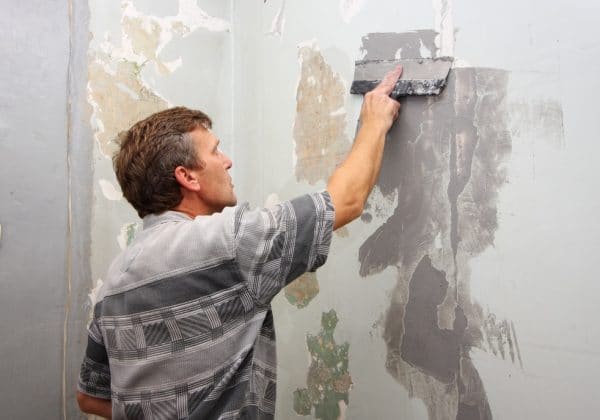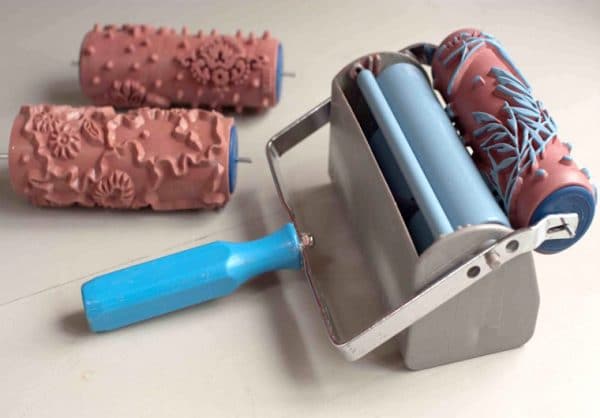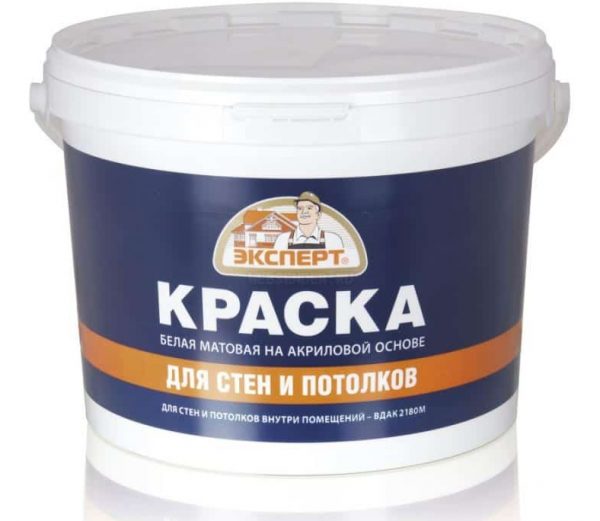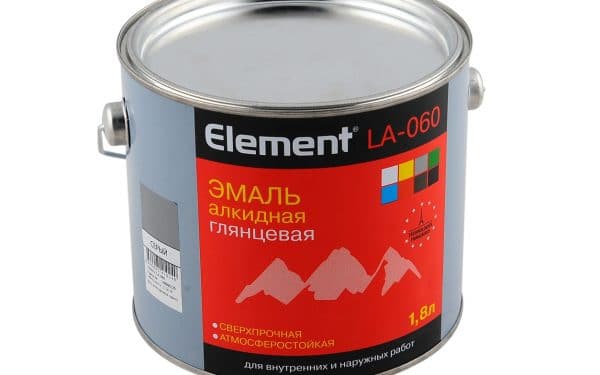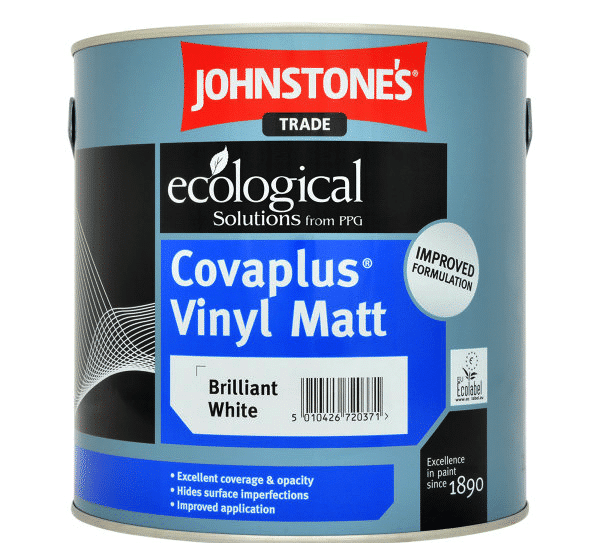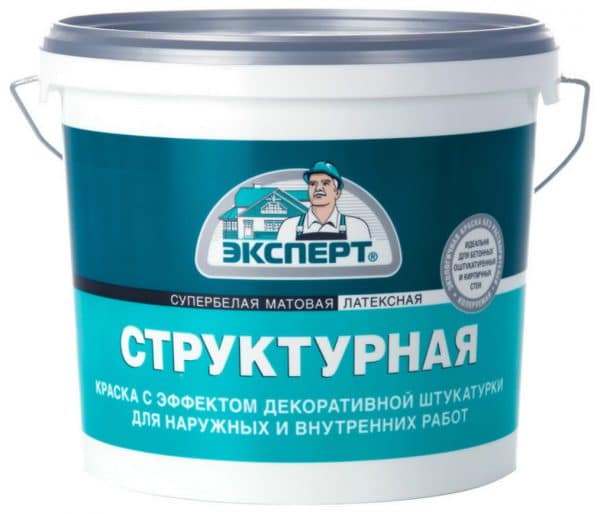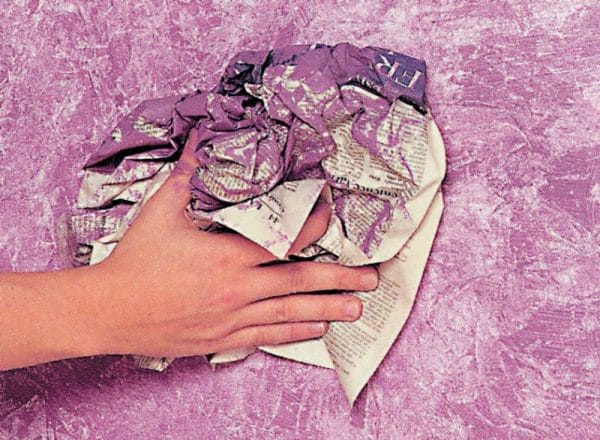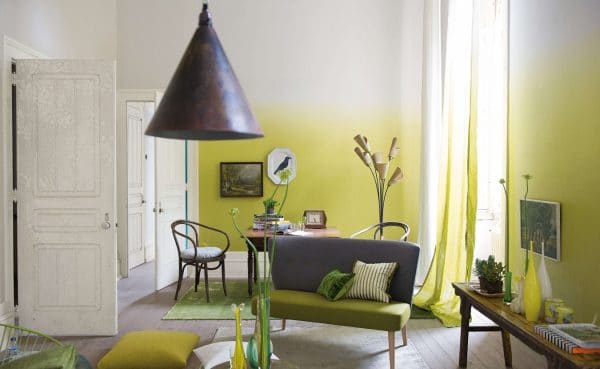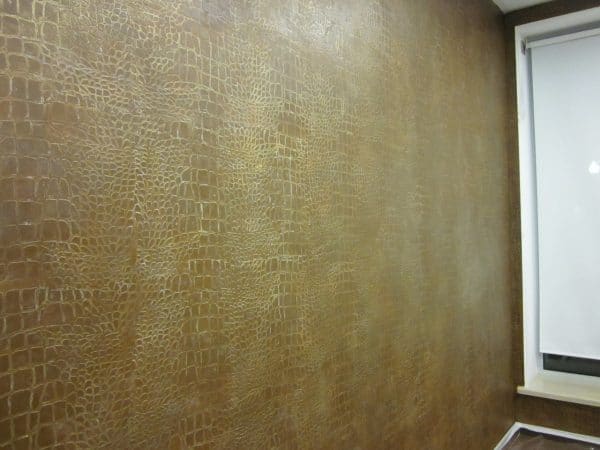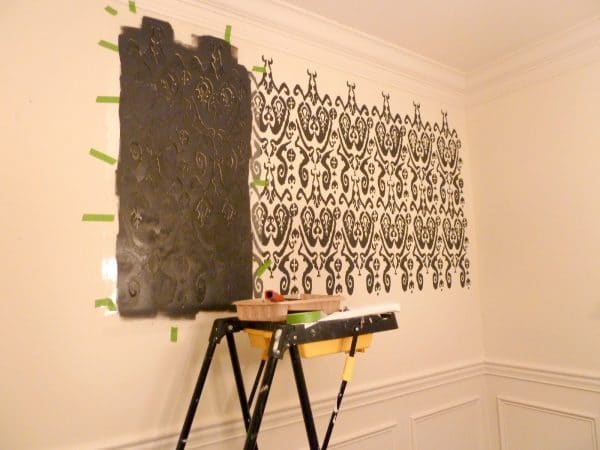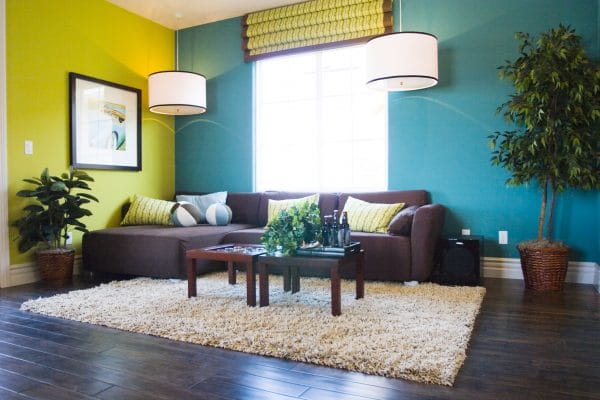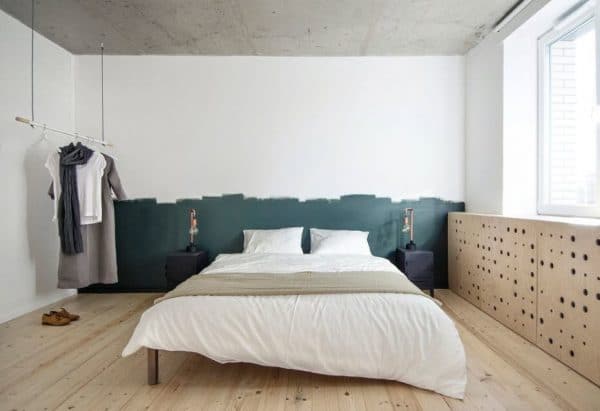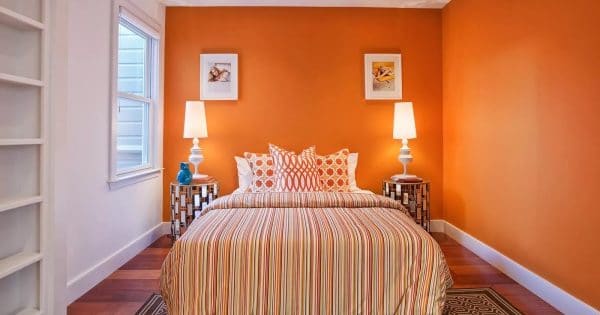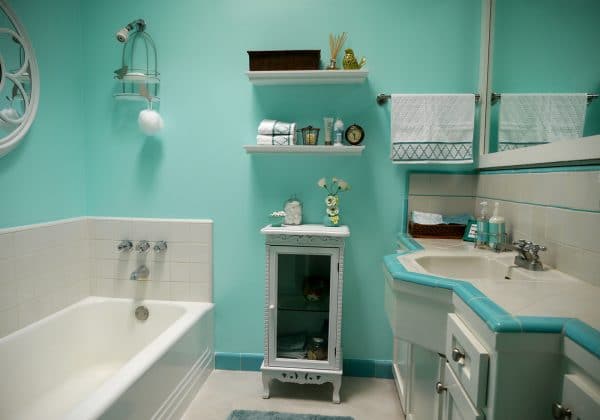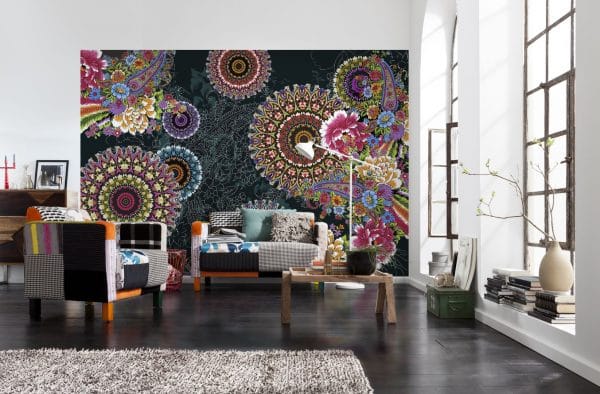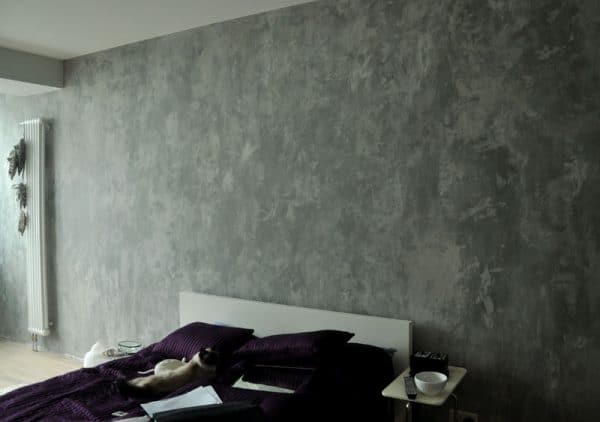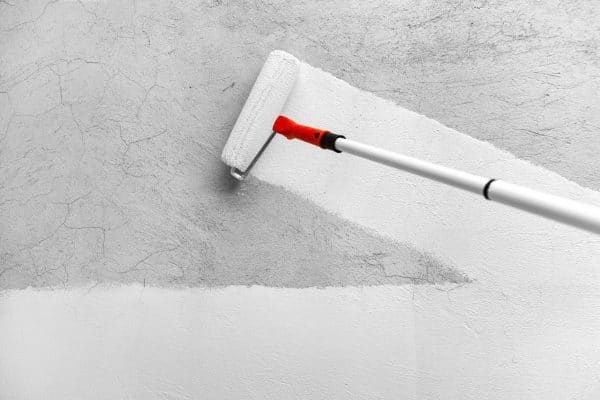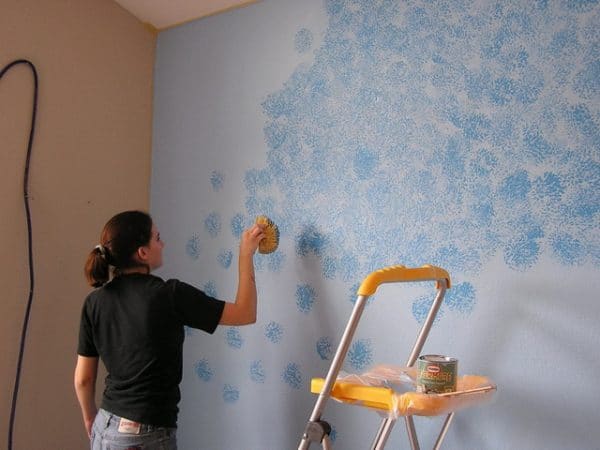Wall painting is the right solution for quickly refreshing the interior. But monophonic decoration sometimes seems boring, so many refuse this method of decorating rooms. There is a solution: there are modern design ideas for wall painting that will make the interior unbanal without any extra cost.
- Wall preparation
- Painting tools
- Types of paint
- Acrylic paints
- Latex paint
- Water based paints
- Alkyd and oil paints
- Silicone paint
- Silicate paint
- Acrylic vinyl paint
- Acrylic latex paint
- Structural paint
- Advantages of decorative paints
- Painting walls in the apartment: design techniques
- Textured staining
- Frottage
- Sponge
- Using a fabric roller
- Ornament
- Color combination
- Gradient and Ombre
- Borders
- Stippling
- Skin effect
- Venetian stucco effect
- Horizontal division
- Horizontal and vertical stripes
- Stencils
- Divorce
- What gamma and style to choose
- Modern ideas for painting walls
- Living room
- Bedroom
- Kitchen
- Children
- Hallway
- Bathroom and toilet
- Balcony or loggia
- Combination with other materials
- Wallpaper and painting
- Photowall-paper and painting
- Plastering and painting
- Wood and painting
- Stone and painting
- Brick and concrete walls with painting
- Brick and painting
- 3D panels and painting
- Drywall
- DIY tips for painting walls
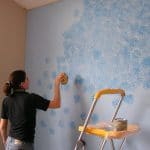
Wall preparation
Painting walls in an apartment is easy to do with your own hands. The painting technology itself is quite simple, but the result will please only when conducting quality surface preparation. If the wallpaper can hide minor flaws and defects, then the paint, especially matte, will only highlight them. Only textured materials can hide pits and small irregularities, but ordinary paints can not do it. Wall problems will be especially noticeable in good lighting: they will immediately catch your eye.
To prepare the walls for decorative decoration, you need to perform the following steps:
- clean the base from the old coating, especially from smooth paints;
- close up all defects, putty if necessary;
- sand the walls well;
- apply a primer in 2-3 layers.
to contents ↑You can start painting only with the complete drying of all layers of the rough finish, otherwise the paint will go uneven and will not last long.
Painting tools
You can apply the paint in any way: brush, roller, spray. On small surfaces, the preferred use of a roller is that it gives a good result and is inexpensive. Also, depending on the chosen design option, stencils, sponges, fabric rollers, various spatulas, hard brushes may be required.
to contents ↑Types of paint
Interesting ideas for decorating walls can be carried out using a variety of paints. There are several types of materials on sale that are suitable for indoor walls and have a rich color palette. The properties of paints vary depending on their composition.
Acrylic paints
Such materials are most often used in finishing work, because they have the best price-quality ratio and a large assortment of shades for tinting (about 1000 tones). Acrylic paints are fireproof, do not harm health and the environment, strengthen walls. Finishing with such material will last a long time, because it will not be subject to destruction from temperature extremes. In too humid rooms, it is not worth using acrylic paints: they do not differ in high moisture resistance.
to contents ↑Latex paint
Typically, such materials are purchased for rooms with high humidity. After application, they form a strong protective film that protects the walls from water and damage. Latex paints are environmentally friendly, odorless, fireproof, and dry quickly. When thickened, they can be diluted with water. Unfortunately, the color gamut of such materials is less extensive, usually they are tinted in soft colors. Under the film, harmful microorganisms (mold fungi) can multiply, therefore it is advisable to apply a primer with antiseptic additives on the walls before painting.
to contents ↑Water based paints
These materials have the lowest cost, are completely harmless, breathable, and do not violate the indoor microclimate. They are recognized as the most popular for wall painting, because they are economical in consumption, are sold everywhere and tinted in any color. Less - the need for frequent updates, the speed of flushing.
Alkyd and oil paints
Alkyd paints give bright, saturated colors, they are very durable, not prone to scratches, suitable even for wet rooms, serve for a long time. The drawback of the paints is significant: they are harmful to health until they dry completely, as they contain toxic organic solvents.
Oil paints are now practically not used in interior decoration work. They dry for a very long time, give an unnatural-looking coating, have a huge expense and high cost.
to contents ↑Silicone paint
Such material is well suited for walls with small bumps. It is able to fill small cracks, pits, visually leveling the surface and giving it an attractive look. Silicone-based paints interfere with the growth of fungi, have excellent water-repellent properties. Minus - the high cost of paints, because they are used in decoration less often than acrylic and water-based.
Silicate paint
The composition of such materials is pigments and liquid glass. They are perfect for concrete, plastered walls in dry rooms, in conditions of high humidity and unstable temperature conditions are not used. Silicate paints are fireproof, have a high degree of vapor permeability, their coating will withstand more than 10 years of operation.
Acrylic vinyl paint
The composition includes acrylic dispersion and polyvinyl acetate, which is the basis of PVA glue. Paint is considered low cost, widely used for interior decoration. The material has quite a few disadvantages. It does not belong to the category of wear-resistant coatings, does not tolerate humidity and temperature changes, requires perfectly smooth walls, otherwise all defects will be visible on them.
to contents ↑Acrylic latex paint
By adding latex, this acrylic paint becomes more beautiful, matte, allows you to get a durable coating that is resistant to moisture. The material is characterized by high decorative and performance.
Structural paint
This paintwork is characterized by increased viscosity, the presence of special particles in the composition, which allows it to give the wall an unusual texture. The paint may have an acrylic, silicone or mineral base. It is non-toxic, odorless, has excellent water resistance, the painted coating can be washed with SMS.
to contents ↑The material masks the defects of the base, lasts a very long time, allows you to make an original drawing on the wall and show your imagination. Paint is applied with a sponge, a rigid textured roller with teeth, a special comb or spatula. Cons - high price and the need for certain skills.
Advantages of decorative paints
The use of paints as decoration for residential premises has a lot of advantages:
- high service life when compared with wallpaper or different types of plaster;
- lack of joints, crevices, creating a perfectly even coating;
- a wide range of colors, shades, the ability to pick up any desired tone;
- moisture resistance (for some paints), they are used even in the kitchen and in the bathroom, bathroom;
- no need to clean the paint layer if you want to change the color (possible repeated application on top of the old coating);
- environmental cleanliness, safety, they are used in children's rooms, in residential premises for allergy sufferers and those suffering from lung diseases;
- suitability for all types of substrates: concrete, brick, plaster, drywall.
to contents ↑
Painting walls in the apartment: design techniques
The easiest way is to paint the wall completely in one color, but this method may seem boring. It is better to choose a fashionable design option for coloring, because a huge number of such techniques have been developed.
Textured staining
This finishing method combines various methods of decorating one surface. The result is a coating with a unique texture and playing with interesting shades. Due to the different arrangement of strokes and the application of tones, masking of small defects of the base is possible, which will reduce the time for its preparation.
Frottage
Special experience to implement such a technique is not required. First, the wall section must be painted, then, before the paint is completely dry, take a piece of paper or cellophane, mold a lump from it and blot the wall. You can make regular prints or those that will go on top of each other. For frotting, it is worth choosing thick paints that dry longer, and the prints on them will be more pronounced.
to contents ↑Sponge
This is another way to create a textured surface. Thick paint in this case is applied with a sponge or brush, resulting in an interesting texture. It is best to choose pastel-based water-based paints to work to visually increase the size of the room.
Using a fabric roller
You can buy or make a fabric roller yourself: wrap a regular tool with a lint-free cloth in the form of a bundle. Taking coarse textiles, you can get an interesting effect that looks especially beautiful in the nursery, bedroom. The procedure will be as follows:
- paint the walls in a neutral tone;
- wait to dry;
- prepare a paint of a different, darker shade;
- moisten the tourniquet on the roller with paint;
- paint the walls in different directions at once.
Ornament
You can make an ornament on any wall that has already been painted in the base color. First, draw it with a pencil, then paint it with a brush using other paints.
Color combination
For painting walls, you can apply 2 colors or more - if desired. The main thing is that they harmonize well with each other, so it is better to try the painting in advance on paper. To visually raise the ceiling, darker tones are applied to the lower part, the top of the walls is decorated with light colors. It is better not to use too dark paint: it will irritate and depress a person.
Gradient and Ombre
Gradient is an interesting staining technique that uses different shades of the same color. You should start from the bottom, taking darker tones. The gradient can use 3 colors or more, if desired. Ombre is a gradient-like technique, only the shades here smoothly pass into each other from saturated to light.
to contents ↑Borders
To combine different colors when staining, it is not necessary to be a professional painter or artist. To get even boundaries, lay a strip of adhesive tape in the right direction, and after drying the paint, remove it. Also, borders can be made more distinct, distinguished with the help of battens, borders, moldings, beams, mosaics. The same devices will help to hide ready-made joints that turned out uneven.
to contents ↑Stippling
This method involves painting walls with the effect of an old ragged surface. First, the wall is covered with the selected paint, then a contrasting colored glaze is applied from above and randomly passed through it with a wide brush. Additionally, you can touch the wall with a round paint brush until the layer of glaze has frozen. As a result, the coating will become similar to the old.
Skin effect
Usually this method is used in the office and the hall. After staining it will appear that the wall is covered with leather. To apply the paint, you will need a suede brush and a piece of suede. The order of work is as follows:
- coat the base with latex paint of any color;
- mix darker latex paint and glaze separately;
- apply the mixture with a regular brush on a specific section of the wall;
- moisten the suede brush with water, squeeze it out, lightly touch the base, making stains;
- attach a piece of wet suede to the plot - this will help to leave a “leather” pattern;
- process the entire wall in small parts in this way.
Venetian stucco effect
This method gives an excellent effect, however, it requires serious time costs. It is necessary to pour latex paint into a large container, sprinkle a little dry pigment on one side. Next, you need to mix the pigment in only ½ mass, so that the rest remains light. Then take light paint on a plastic spatula, apply it as a plaster. Nearby make a dark smear. After the appearance of multiple dark and light spots, it is necessary to drive the trowel along the wall to obtain a coating with stains. As the paint dries, it is sanded with fine sandpaper and coated with a special wax composition.
to contents ↑Horizontal division
This technique visually expands the room. It involves the use of a horizontal dividing strip. It is best to place the bottom of the wall in a darker tone, and the top - light, although various experiments are possible. A border is placed between different shades of paint.
Horizontal and vertical stripes
Narrow vertical stripes on the walls are especially recommended if the ceilings in the house are low. Bright tones in this technique are best not to be abused. It is very important to choose well-compatible shades, otherwise the room will seem pretentious. You can also paint on the walls several horizontal stripes that visually expand the boundaries of space.
Stencils
The use of stencils allows you to get original drawings and ornaments even without the presence of artistic abilities. Templates are sold in stores, and you can also make them yourself by printing or drawing. After the stencil is fixed in the right place, the walls are glued with masking tape and the central elements are painted in the desired color or different shades.
to contents ↑Divorce
To make stains easier than that - you just need to randomly move the paintbrush over an still-dry wall, on which the paint of the required color is applied.
What gamma and style to choose
So that the room after staining evokes only pleasant emotions, you need to choose the right colors or their combinations. It is better to strive for your own desires, and not follow the fashion, because it changes almost every year. Here are the most popular colors of paints and their purpose:
- white - ideal for ceilings, small rooms, visually expands the boundaries;
- beige - a very popular color, suitable for all types of interior, looks better in combination with contrasting tones;
- black - reduces space, is applied only accent, otherwise it will make the room gloomy;
- gray - looks stylish, gives coziness, can become a backdrop for walls, but always requires dilution with more “fun” tones;
- red - an aggressive color, is used in the interior with caution, is practically not used in bedrooms and children's rooms;
- yellow is an excellent color for creating bright spots and diluting the boring atmosphere, especially recommended for northern rooms;
- orange - gives a feeling of warmth, harmony, has a good communication, is popular in the living room and in the kitchen;
- brown - a classic color in the interior, beige and peach shades are perfectly combined with it;
- blue - gives a feeling of relaxation, calming, adjusts to relaxation, its light shades are well suited for the bedroom;
- purple - used accent, as in the dark version it can cause a feeling of fatigue;
- green - calms, gives a feeling of proximity to nature, suitable for the hall, bedroom.
Room styles may vary. Depending on the style direction, you should choose both a shade option and the type of wall painting. Here are the most popular interior styles:
- Modern. Usually the walls are painted in one or two shades, a combination of rich colors with white, beige colors is popular. Strips, an ornament on the walls are well suited. The palette should be unobtrusive.
- Minimalism. Applies a single color stain in colors such as blue, gray, white. Textured paints, moldings are used.
- Loft. Typically, the design includes brown, gray, black tones. Often a brick painted wall is introduced.
- Classic. The interior can be decorated in any color, preferably pastel colors with ornaments, monograms, gilding.
- Provence. Apply blue, lilac, mint tones, pink and peach shades. The walls can be plain or striped; art painting is popular.
- Country. Stone textures, mustard, white, brown tones, antique effects and whitewash are used.
Modern ideas for painting walls
Interesting design techniques for painting walls can be introduced into the interior of any room: from the kitchen to the nursery.
Living room
This room can become a real platform for the embodiment of creative ideas. Walls can be painted in several matching or contrasting tones; different textured finishing materials are used.
Bedroom
The atmosphere here should be calm, pacifying. It is necessary to select only neutral, eye-pleasing tones close to natural. Too juicy shades are best avoided. Stencils, strips, various unusual ornaments, as well as accent wall reception are well suited for bedroom design.
to contents ↑Kitchen
In the kitchen, paints that are easy to wash and have moisture repellent properties are used. It is better to paint the walls with calm, discreet tones, and select headsets in a contrasting color.
Children
In the nursery, drawings, strips, numbers, other pictures look great, as well as areas made with slate paint. They can be made bright, while the walls themselves are better painted in a neutral color.
Hallway
The corridor is often painted using the ombre or gradient technique, while too dark tones are not used here due to the lack of windows. You can combine painting with plaster, decorative stone. For visual expansion of the room, the horizontal strip method is used.
Bathroom and toilet
Wet rooms are painted only with water-resistant materials, but it is better to tiled the areas that water will regularly fall on. For the bathroom, combinations of white with orange, blue, and yellow are traditional.
to contents ↑Balcony or loggia
Open balconies are painted with materials for outdoor use, closed - with a water emulsion, acrylic and latex paints with the addition of antiseptics. Most often, a cold palette of shades is used here to reduce the intensity of natural light.
Combination with other materials
It happens that in one room the paint is combined with other types of finishes. This helps make the design approach more creative.
Wallpaper and painting
Usually they draw up only one accent wall with paint or wallpaper, while the rest is finished with a second material. Some wallpapers can be used for painting, which will also serve as an interesting solution for the bedroom, study, living room.
to contents ↑Photowall-paper and painting
If one wall is covered with photo wallpaper, the rest can be painted. In this case, it is not recommended to use intricate painting techniques, since the photo panel so attracts enough attention.
Plastering and painting
Decorative plasters are coated with paint so that the walls are embossed and evenly painted. You can also combine “bark beetle”, other types of textured plasters and painted walls in the interior of the bathroom, hallway.
Wood and painting
Wooden walls decorated with panels, clapboard, timber look good next to the painting in the interior of country houses, attics.
Stone and painting
This combination is very typical for the decoration of the fireplace area, country-style kitchen in the part of the apron. Also, the combination of stone and paint looks good in styles such as Provence, loft.
Brick and concrete walls with painting
Such surfaces are best painted with acrylic, latex, alkyd paints. Artificial aging, streaks, art strokes, duets of contrasting colors look original.
to contents ↑Brick and painting
Typically, a brick is red or white, less often colored. It can be painted in tone to enhance the brightness of the basic shade or tinted in any suitable color.
3D panels and painting
Typically, these panels are used in modern interior styles. For them, plain coloring is enough to make the design stylish, but not elaborate.
Drywall
Drywall dyeing is very popular. If the joints are qualitatively repaired, the result will be ideal, because the walls and ceiling are smooth, have no flaws. On drywall, you can use any, even the most complex techniques.
DIY tips for painting walls
Before painting the walls, priming cannot be ignored: only the soil will help the paint lie evenly, without spots and stains. It is usually recommended to apply two coats of coatings, therefore its consumption should be planned with a margin. You can repaint the walls in colors close to each other or overlap the pastel colors with more juicy ones.
When using a brush, you need to apply horizontal stripes, and then smear them vertically. The roller is rolled down the wall, pressing it well. The ideal option is to pass the layer with a brush, and then rub it with a roller. Decorative staining is a real task, the main thing is to strictly adhere to the advice of masters and plan interior design in advance.

